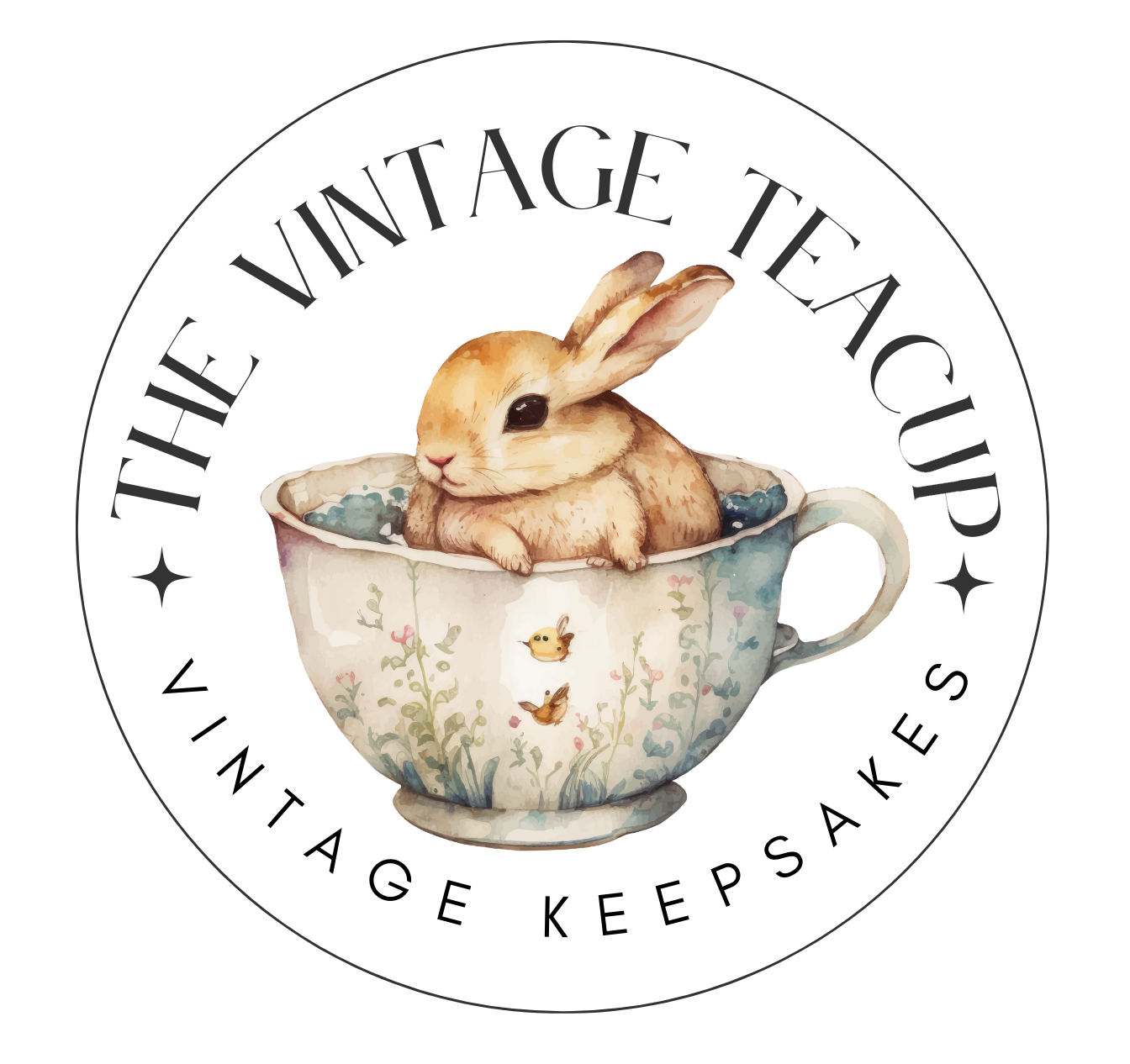
Crazing is that spider-web, fine crackling in the glaze surface on older pieces of bone china. It is a naturally occurring event in many glazed surfaces and can even be found in cabinet-life only pieces.
Mostly crackling adds to the old-world charm of a much loved plate or cup, but if tea, coffee, or even fats and oils enter these tiny, spider web cracks, over time, the piece may become stained. While there is no cure for the actual crazing, these pieces can often be clean successfully and be restored to their former beauty. We have bought and sold many beautiful, older pieces of china, we always mention any crazing in our listings, cleaned or not. If a buyer wanted a pretty cheese dish for use, or teacup for their cuppa, they need to know that the surfaces could let in oils, fats, tea or coffee into the core of the item and eventually it will discolor.
If you have a favorite tea cup and saucer with discolored crazing, follow the simple steps below to remove the discoloration. Please use every care in handling bleaching products and keep out of reach of pets and children.
 |
 |
Purchase some 40 Volume Creme or Liquid Developer, I buy mine from my local beauty supply store, alternatively, I have supplied a linked image above to buy from Amazon. Buy enough to cover your project in it, they come in different sizes and you should be able to find one that's perfect for the job.
You will need:
1. Developer, enough to immerse object for bleaching.
2. Gloves, don't get it on your hands, it stings!
3. A container for bleaching, I use a plastic container. (Note: If you just have a teacup interior to clean, fill it up with the developer, rather than submerging the whole cup)
4. Patience :) Gently place the item in the container on a protective tray incase of overspills (no lids, as the developer may foam up as it works)
Pour developer over item until covered completely. Then leave it. I check back in 2 days. Some pieces will need a rinse and another day or two before they are cleaned, so be patient.
With some heavily soiled china and porcelains, you will see the stains leaching out into the solution. You will know it's working!
Rinse, rinse and rinse again, if it's a teapot, you will need to clean down the spout with a small bottle brush to remove all traces of the developer. It will be slippery, so take great care not to let it out of your grasp!
This is the gentlest and easiest way I know to clean those beautiful old items. I am sure that they were not designed to survive too many soaks in what is essentially a bleach. But before you throw that darling old plate of Nana's, try this method, and give it another life! Note: Try not to leave anything in the solution longer than it takes to remove the stains, this is a bleach and if left long enough, it will eventually lighten the paints used to decorate the china.

This darling, older Crown Ducal teapot in Bristol Pink transferware arrived in a box of wonderful, much loved treasures. The auction house, not seeing much value in them, due to the condition, let them go at a price well below their actual value...to me, anyway :)
The teapot has no chips or cracks, just the discolored crazing for years of happy use. Today it's going into a crème developer bath.

I decided to do the interior walls first, just to keep an eye on it. The inside is in worse shape than the exterior, so I didn't want to over do the exterior by soaking it all at once.

Check out the finished product, it turned out beautifully, inside and out! Well worth the time and effort in giving this gorgeous piece of transferware another life!

